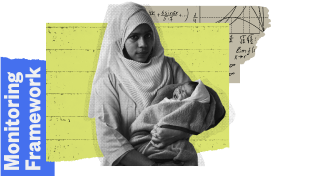Republic Of Albania
Download full country profile
 2,836,790
Total Population
2,836,790
Total Population
A dispute exists between the Governments of Argentina and the United Kingdom of Great Britain and Northern Ireland concerning sovereignty over the Falkland Islands (Malvinas).
The boundaries and names shown and the designations used on this map do not imply official endorsement or acceptance by the United Nations.
Albania’s Population dynamics Data


Total Fertility Rate (births per woman)
Adolescent (15-19 years) Birth Rate (births per 1,000 girls)
Maternal Mortality Ratio (Per 100,000 live births)
Albania’s general commitment
As part of its ICPD25 commitments, the Republic of Albania has committed to ending unmet need for family planning and ending preventable maternal deaths, as well as an increase in financing for reproductive, maternal and adolescent health.
Unmet need for family planning
is relatively the same in urban and rural areas, but is highest among women with no education and women from the poorest households.
Albania’s maternal mortality ratio declined from 2000 to 2017, the year in which it was estimated to be 15 deaths per 100,000 live births.
Albania’s adolescent birth rate in 2020 remains approximately the same as it was in 1990.
It is highest among girls with only primary education, and higher in rural areas than urban areas of the country. The adolescent birth rate among girls in the poorest households is two times higher than the rate in the wealthiest households.
In Albania 11.8% of women aged 20-24 years were married before age 18,
with 1.4% of women were married before age 15 – one of the highest in the region. Marriage before age 18 is highest among women with only primary education, and those in the poorest and middle-income households.
Since the Nairobi Summit, forums on sustainable development, sexual and reproductive health and prevention of gender-based violence were utilized to advance advocacy for the ICPD agenda and the Nairobi commitments and strengthen the cooperation of stakeholders.
With a rapidly ageing population and continual out-migration, Albania is facing an imminent challenge to ensure access to affordable and quality care services for all elderly in need.
Between 2020 and 2050, the population aged 65 or above will increase from 420,000 to 623,000, and its share in the total population will increase from 15% to 26%.
As part of its ICPD25 commitments, Albania committed to implement the National Action Plan for Elderly 2020-2025, by allocating respective budget and monitoring its implementation step by step and making the necessary legal provisions by 2023.
Since the Nairobi Summit, the National Action Plan on Ageing 2020-2024 was drafted and adopted.
To advance ICPD25 commitments, in April 2020, Albania’s Ministry of Health and Social Protection created a protocol that ensured women’s shelters in the country would function undisrupted among the COVID-19 pandemic. This protocol designated the shelters for domestic violence protection as essential services.











































